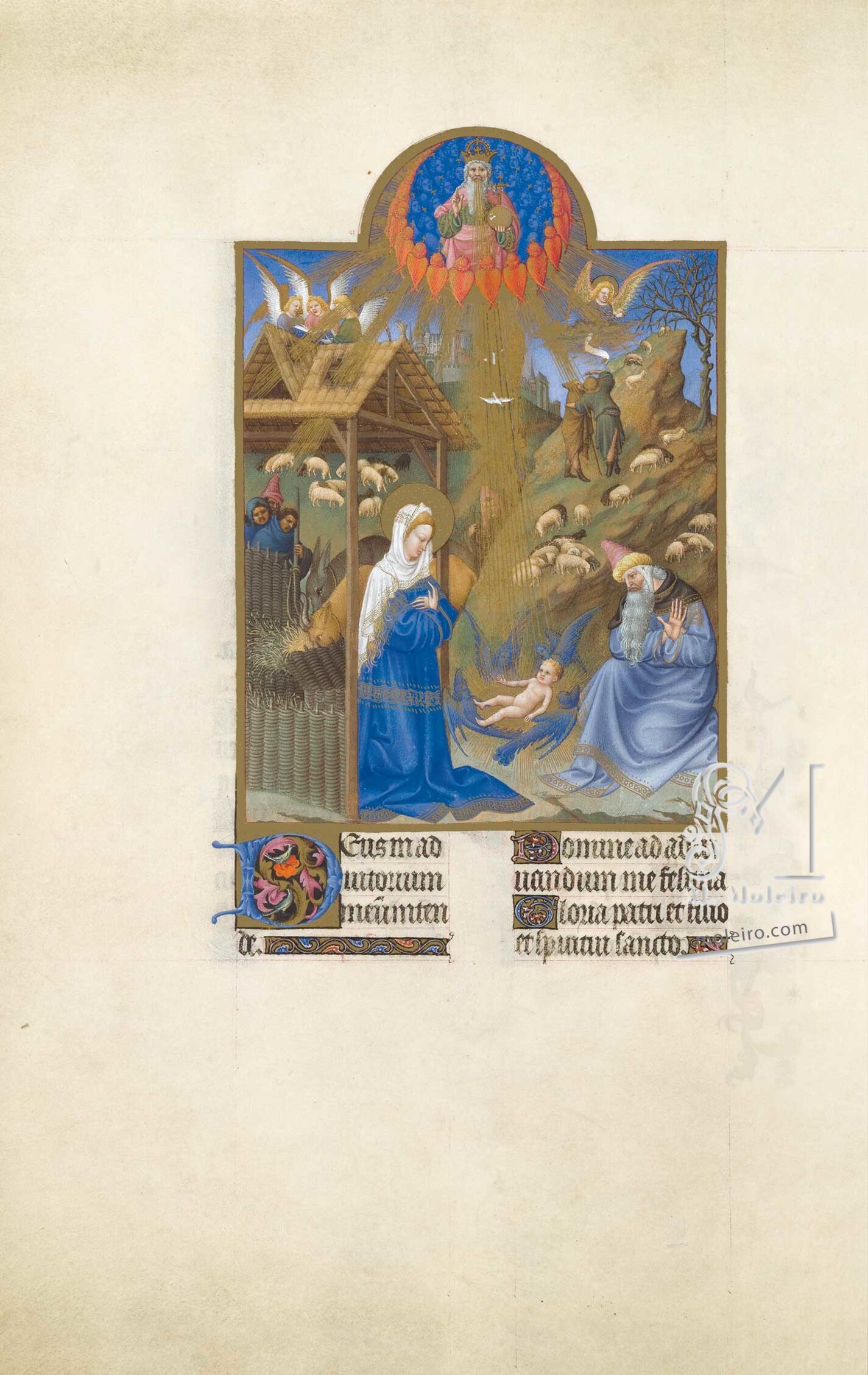Limbourg brothers
The Nativity is presented in the form of the Adoration of the Child, a theme freely adapted from the vision of St Brigid of Sweden in Bethlehem in 1372: “The Virgin kneeled with great devotion and began to pray [...] and suddenly was delivered of the Son, who emanated such a great and marvellous light that the Sun did not bear comparison [...] But I saw the glorious Infant lie on the ground, luminous [...] When the Virgin became aware that she had been delivered of her Child, she bent down her head, joined her hands on her breast, and, adoring the Child wih great devotion, said to him: ‘Welcome, my God, my Lord, my Son’”. This moving account of the birth of Christ as an epiphany of divine light, accentuated by the surrounding angels, is also a Trinitarian theophany because Father and Son are joined by rays of light upon which a dove, the symbol of the Holy Spirit, descends. God the Father, wearing a closed imperial crown, holding an orb surmounted by a cross, and blessing with his right hand, appears in the lunette within a circle of seraphs and cherubs emanating golden rays. In the background, a golden statue of Mars on a pedestal is practically hidden from view, indicating that the old pagan era has been replaced by the era of Christ. We then have the theological idea of the Son as incarnation of the word of God, conveyed by the rays which directly leave the mouth of the father to reach the radiant Child. Joseph, the ‘staid old man’ of the vision, as foster father, is placed opposite the Virgin, making for a symmetrical arrangement; and his is an expression of surprise. The shepherds, acting on the word of the angel to the right, make their way to the humble, open outhouse where, behind the wattle wall, we see the ox and ass, interested only in the straw in the manger. A choir of angels on the roof sings angelic songs. In the distance, we see the towers of Bethlehem.
